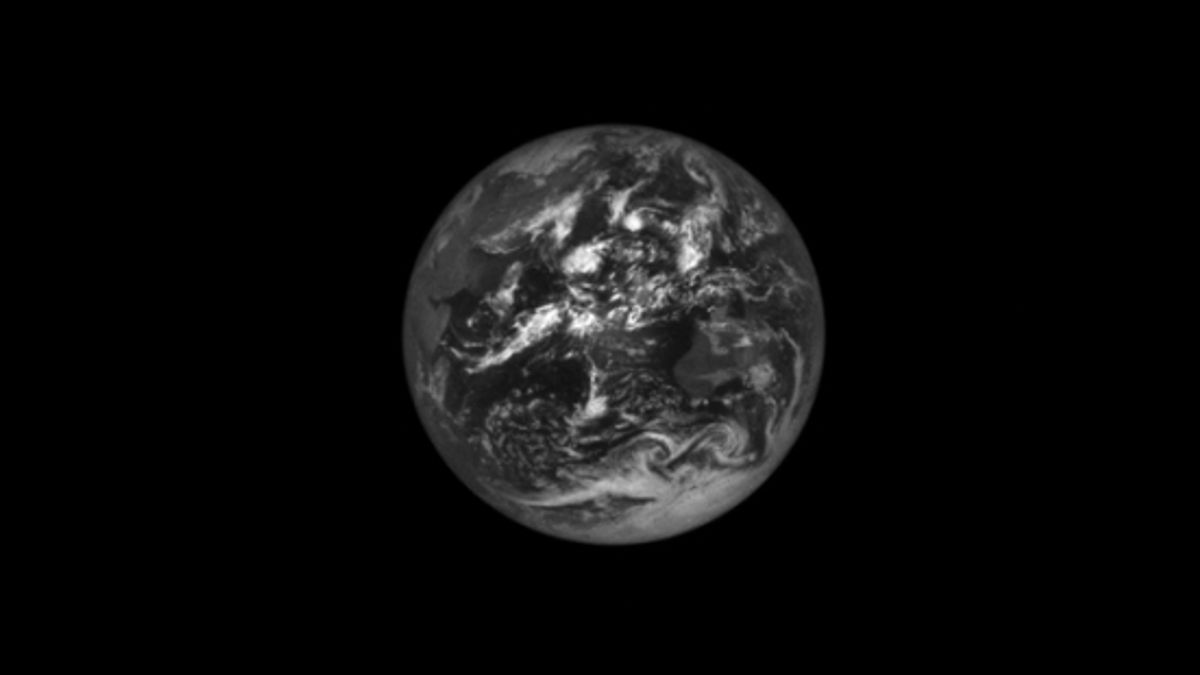JAKARTA - NASA's Lucy spacecraft earlier this month took advantage of Earth's gravity to head for a Trojan asteroid in Jupiter's orbit. During that trip, Lucy took a fairly stunning image of Earth and the Moon.
Lucy's goal is to visit Trojan asteroids to learn about how the Solar System formed. This fossil population of ancient asteroids orbits around the Sun at the same distance as Jupiter.
To reach that distant asteroid, the trajectory of Lucy's spacecraft requires three Earth gravity assistance to drive her on a six-year long journey to this mysterious asteroid.
When Lucy passed Earth on October 15, she took pictures of Earth calibrating spacecraft instruments at a distance of 385,000 miles with the Terminal Tracking Camera (T2CAM) system producing black and white photos. T2CAM is a pair of cameras designed to track asteroids.
The Earth's view shows Hadar, an▁demikian, a 3.2 million-year-old homilid fossil site named after the spacecraft.
It is known, homides are claimed to be able to provide valuable insights into human evolution, just as Trojan asteroids can help scientists collect stories of the origin of the early Solar System and how it evolves over time.
Earlier on October 13, Lucy also captured images of Earth and the Moon above from a distance of 890,000 miles. At that time, Lucy was still walking towards Earth to fly close and able to capture Earth-Moon systems in the same frame.
In the image captured by Lucy, the Moon looks very vague, separated from its parent planet about 238,900 miles. This remote couple's view opposes the human perception of the Moon seen in the night sky from Earth, which appears relatively close.
Instead, the image reveals how far the true Moon is from Earth, and the darkness of the terrifying space between them.
Launching Gizmodo, Tuesday, November 1, after Lucy bid farewell to Earth, her new trajectory would put her in a two-year orbit around the Sun.
In two years, Lucy will return to Earth for the help of other gravity. From there, the spacecraft still has about three years before it reaches its first target, the Donaldjohanson asteroid.
Then in August 2027, Lucy will start a Trojan tour by visiting Eurybates and its binary couple Queta, followed by Polymele and its binary pair, Leucus, Orus, as well as the binary couple Patroclus and Menoetius.
The English, Chinese, Japanese, Arabic, and French versions are automatically generated by the AI. So there may still be inaccuracies in translating, please always see Indonesian as our main language. (system supported by DigitalSiber.id)








